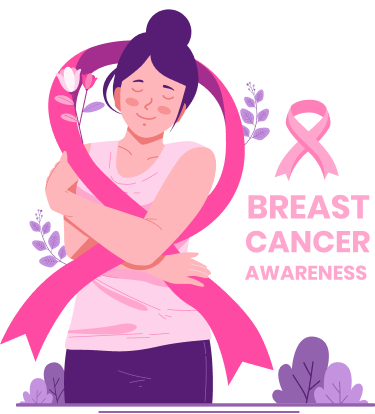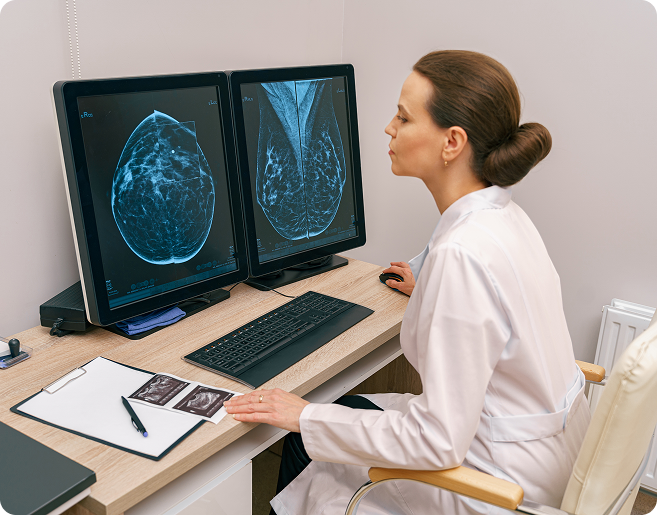Regular breast checks help detect cancer early which can greatly increase the chances of recovery as well as provide more treatment options.

The two main types of screening for Breast Cancer include Breast Self-Examination and Mammograms.

Breast Cancer is one of the cancers that can be detected early at home through self-examination. It is an important part of the screening process, to be used in conjunction with physical examination and mammograms.
Breast Self-Examination can be done in five simple steps.
Begin by looking at your breasts in the mirror with your shoulders straight and your arms on your hips. Look out for any of the following changes:

Dimpling, puckering, or bulging of the skin.

A nipple that has changed position or an inverted nipple (pushed inward instead of sticking out).

Redness, soreness, rash, or swelling.

Raise your arms and look out for the same changes.

While still looking at the mirror, look for any signs of fluid (watery, milky or yellowish fluid, or blood) coming out of one or both nipples.
Next, feel your breasts while lying down. In a firm, smooth and circular motion, use your right hand to feel your left breast and vice versa. Cover the entire breast from top to bottom, side to side – from your collarbone to the top of your abdomen, and from your armpit to your cleavage.
Follow a pattern to make sure you cover the whole breast. You can begin at the nipple, moving in larger and larger circles until you reach the outer edge of the breast. Be sure to feel all the tissue from the front to the back of your breasts.
Repeat Step 4 – this time in a standing or sitting position. If you observe any abnormality, do let your doctor know.


A mammogram is a specific type of imaging that uses a low-dose X-ray system to examine the breast. It is an effective screening tool for early detection of breast cancer, for both women without symptoms, as well as those experiencing symptoms such as a lump, pain, or nipple discharge.



Yes, but you will need to go through an eligibility form to see if you meet our requirements.
You will receive a letter from our staff indicating whether or not the results will require follow up with a doctor for further assessment.
Even though mammograms are the most effective method for early breast cancer detection, it is not always 100% accurate. At times, mammograms may show false “positive” or false “negative” results. Your doctor will be able to conduct further testing such as ultrasounds to confirm the mammogram results.